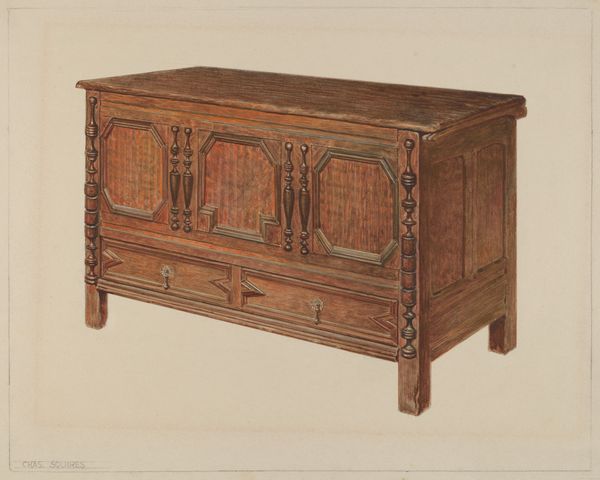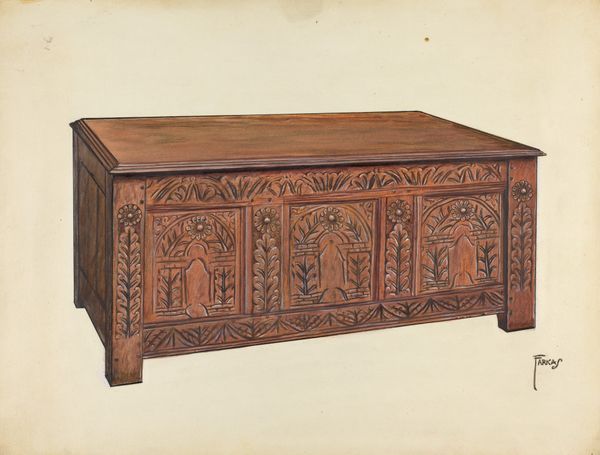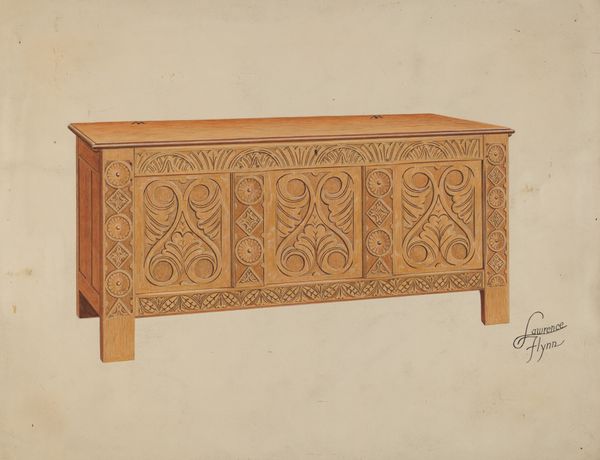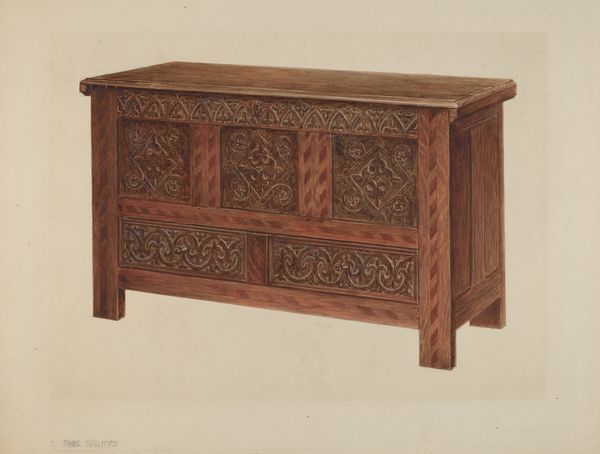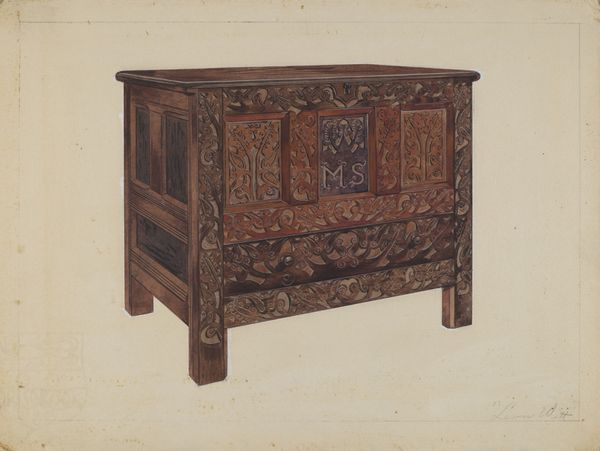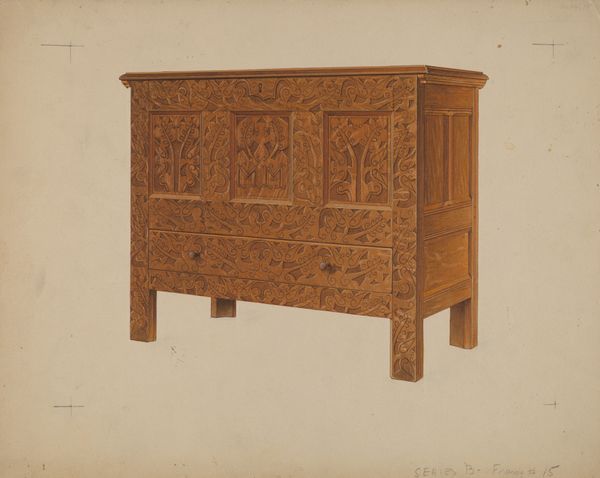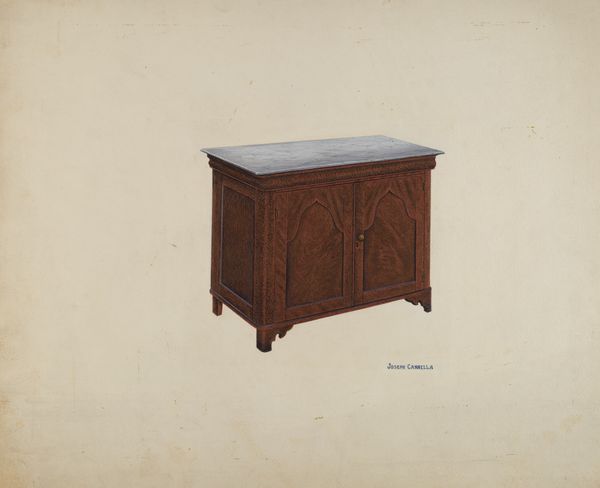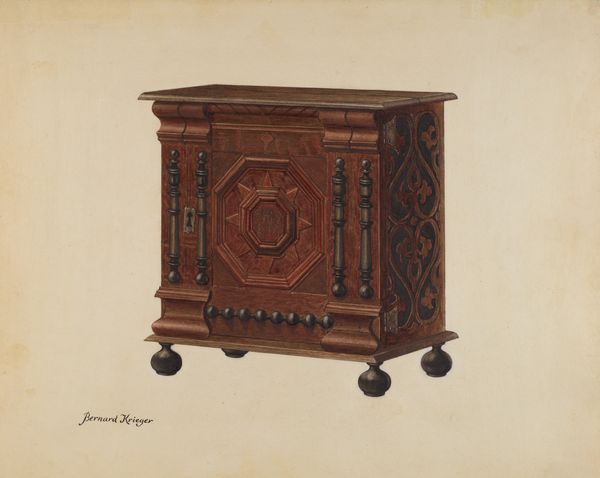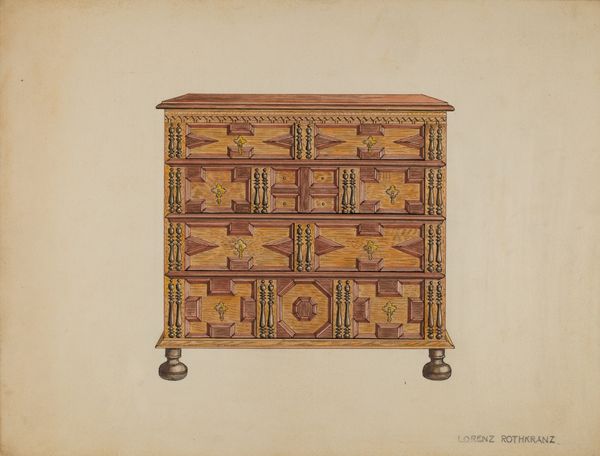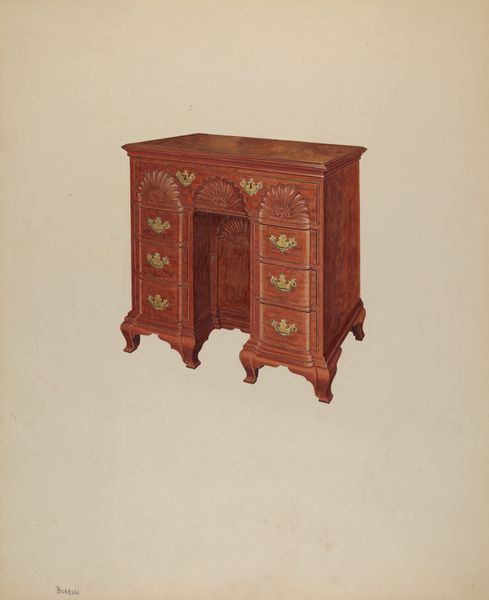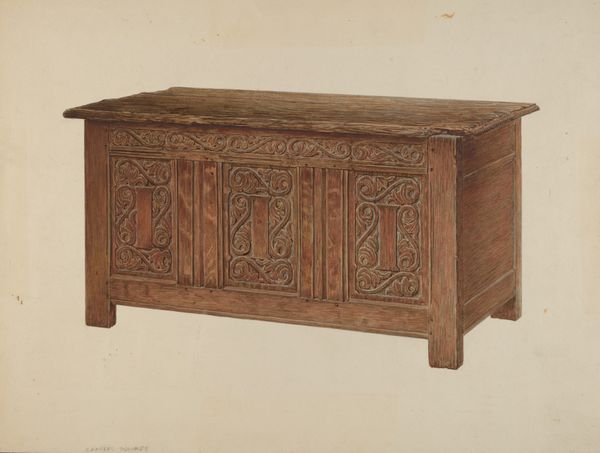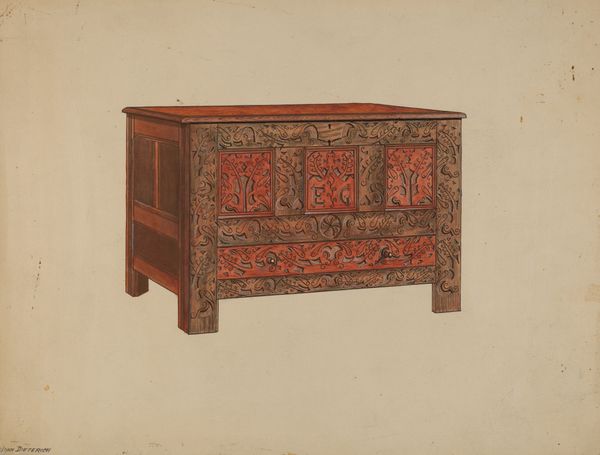
drawing
#
portrait
#
drawing
#
watercolor
Dimensions: overall: 23 x 28.3 cm (9 1/16 x 11 1/8 in.) Original IAD Object: none given
Copyright: National Gallery of Art: CC0 1.0
Editor: Here we have Frank Wenger’s "Desk," created in 1936, rendered in watercolor. It’s quite a formal piece, portraying a richly decorated, classical-looking desk. What do you make of it? Curator: Well, let's consider the material reality. It's not a photograph, but a watercolor *of* a desk. Wenger is representing a mass-produced object—likely machine-made. That shifts the focus. Editor: So, you are suggesting that the drawing draws attention to industrial processes through what it chooses to represent? Curator: Precisely! Look closely at the faux-wood grain. He painstakingly replicates what is likely a cheap veneer meant to mimic more luxurious materials. The drawing points to the economic stratification and the *attempt* at luxury via industrialized methods. Consider the labor involved in the production of the desk itself versus the creation of the image. Editor: I see! He’s almost… archiving a particular kind of material culture through this careful rendering. Are you suggesting the drawing reveals anxieties surrounding industrialization and class aspirations during the Depression era? Curator: Indeed. What else could be motivating such an artifact of an ordinary utilitarian desk if it is not anxieties, considerations, or aspiration surrounding the mode of industrialized reproduction in society? What materials would have been realistically available at the time of creation? And who was Wenger designing it for? Editor: That’s given me a whole new way of seeing this piece—not just as a drawing *of* a desk, but about the desk itself as a product of specific material and economic forces. Curator: And through artmaking, Frank Wenger provokes questions regarding these socio-economical matters. It's a material witness, cleverly disguised.
Comments
No comments
Be the first to comment and join the conversation on the ultimate creative platform.
